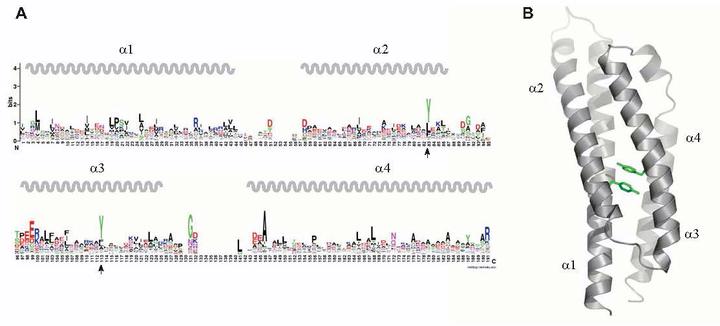Four-helical bundle: a ubiquitous sensory module in prokaryotic signal transduction

Abstract
Motivation: Transmembrane chemoreceptors in Escherichia coli utilize ligand-binding domains for detecting various external signals. The structure of this domain in the E.coli aspartate receptor, Tar, is known and its signal transduction mechanism is under investigation. Current domain models for this important sensory module are inaccurate and, therefore, cannot reveal the distribution of this domain within the current genomic landscape.
Results: We carried out sensitive and exhaustive PSI-BLAST searches initiated with the sequence corresponding to a known structure of the four-helix, ligand-binding domain of the aspartate chemoreceptor. From the resulting sequences, we built a multiple sequence alignment for this domain family, which confirmed that the current TarH model is erroneous and fails to detect most of the domain homologs. In the process, we developed a technique that visualizes the secondary structure prediction of each protein sequence in order to improve the multiple sequence alignment. We found that the four-helix up-and-down bundle represents a large domain family and includes representatives of all major classes of prokaryotic signal transduction, namely histidine kinases, di-guanylate cyclases and chemotaxis receptors.